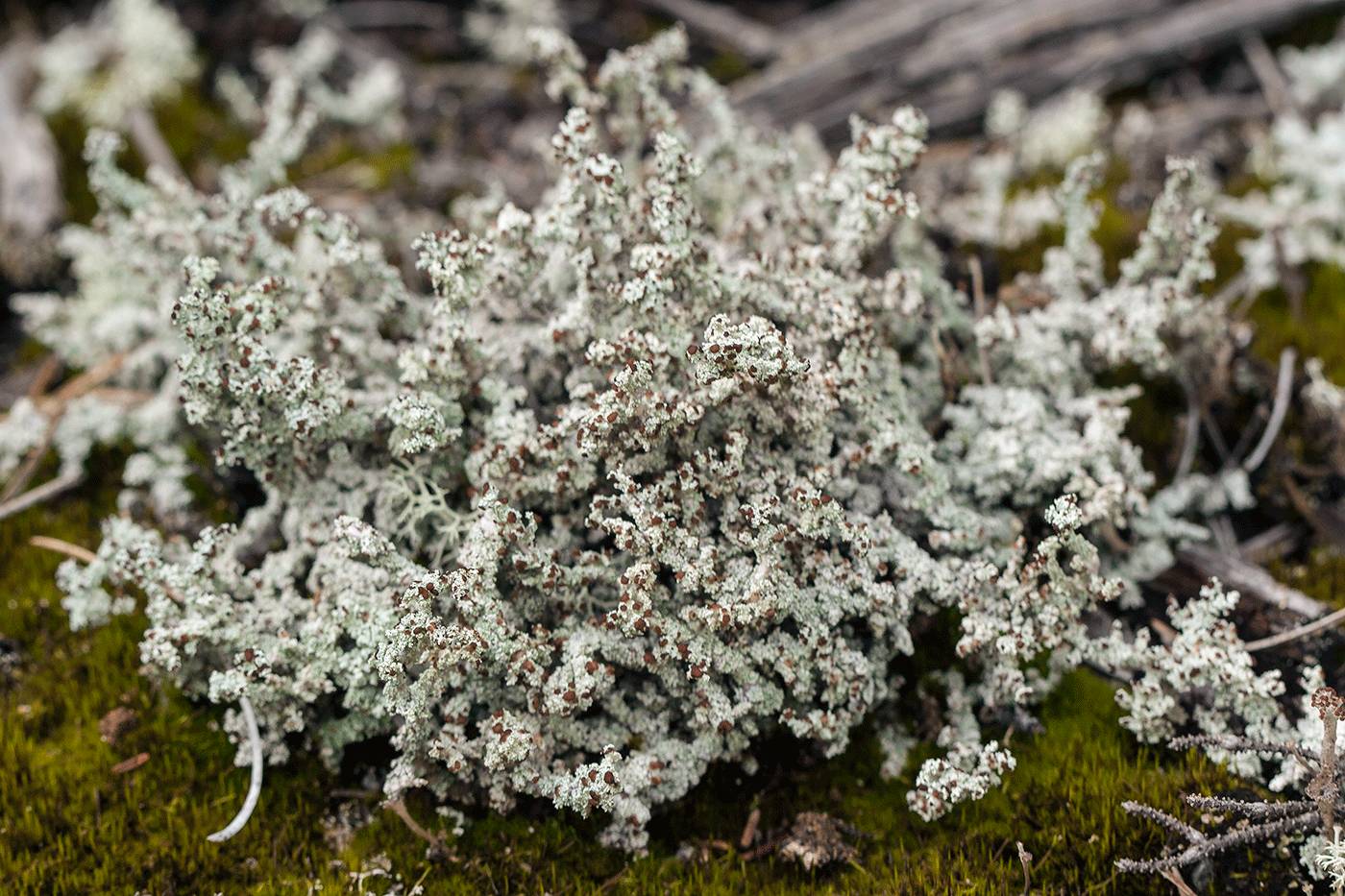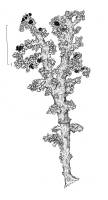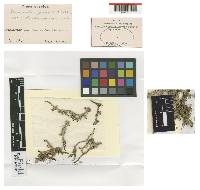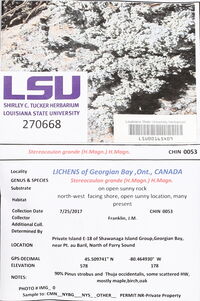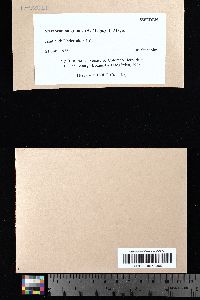
Consortium of Lichen Herbaria
- building a Global Consortium of Bryophytes and Lichens as keystones of cryptobiotic communities -
- Home
- Search
- Images
- Species Checklists
- US States: O-Z >
- US National Parks
- Central America
- South America
- US National Parks
- Southern Subpolar Region
|
|
|
|
Family: Stereocaulaceae
|
Thompson, J., 1984. American Arctic Lichens: The Macrolichens. Primary thallus disappearing; pseudopodetia 4-8 cm tall, in loose growths, the base to 2 mm thick, slowly tapering to the apices, with few and short branches, the main axis dominant to the tip, pale roseate tomentose; phyllocladia distributed in groups along the pseudopodetia, clearly coralline, larger than in S. paschale, 0.4-0.8 mm long, 0.2 mm in diameter, not as coalescent as in S. alpinum; cephalodia common, small, low, pale brown, tomentose, containing Nostoc. Central strand of the pseudopodetium quite loose; hyphae 3-4.5 µ, thinner walled than in S. alpinum and thicker walled than in S. paschale; cortex of phyllocladia thin, 15-20 µ, hyphae 3-4 µ thick. Apothecia 2 mm broad, flat and margined then slightly swollen and with reflexed margin; disk blackish-brown, underside tomentose; hypothecium 40-50 µ thick, 1+ blue; hymenium 50-60 µ, I blue; paraphyses 1-1.5 µ, capitate, tips to 4.5 µ; asci 8 spored, 42-52 x 8-10 µ; spores 4-5 celled, one end thicker, often slightly bent, 20-44 x 2-3 µ. Conidia 5-6 x 0.6 µ. Reactions: KOH+ yellow, P— . Contents: atranorin and lobaric acid. This species grows among mosses and in tundras over gravel soils. It is low arctic and circumpolar boreal, in North America occurring trans-Canada and in Alaska, south to Maine, New Hampshire and Oregon (Lamb 1977). |
|
|
|
Powered by Symbiota

